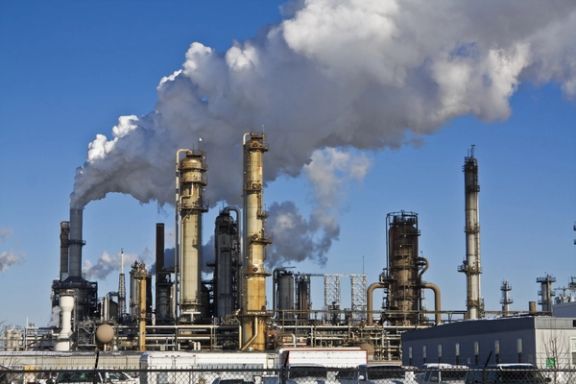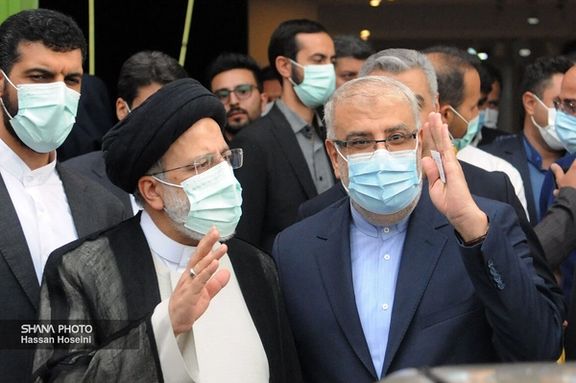Iran's Booming Oil Exports Threatened By Looming Gas Shortages

A senior Iranian oil industry official has warned of the detrimental effects of the country’s gas shortages on its oil production.
Erfan Afazeli, the chairman of the Iranian Federation of Petroleum Industry, explained to ILNA that Iran needs to inject gas to its oil reservoirs to maintain the production flow, warning if not, “it will result in significant damage."
He said the necessary measures would help maintain or increase the pressure within the oil reservoir to push the oil towards the extraction wells; and would enhance oil recovery for the oil that would otherwise be left behind, known as Enhanced Oil Recovery (EOR). The process is essential for maximizing the extraction of oil from a field.
“Currently, our oil recovery factor is less than 20 percent,” he said, claiming that “every one percent increase in the oil recovery factor from oil fields will result in nearly one billion barrels of extra production. Therefore, in the event of the inability to inject gas, the amount of damage is unpredictable.”
Iran’s Oil Minister Javad Owji claimed earlier in the month that the country is producing 3.4 million barrels per day (mb/d) of crude oil, about 1.2 mb/d more than in mid-2021.

Stressing the significance of gas injection for both maintaining current production levels and increasing future production, Afazeli said that Iran’s enhanced oil recovery projects are not implemented due to a lack of know-how and insufficient capital. “Firstly, we lack the necessary technology for enhanced oil recovery. Secondly, and more importantly, we lack the capital required for these projects,” he said.
He bemoaned the fact that currently a significant portion of the produced gas is wasted in the residential sector due to the absence of consumption optimization.
Afazeli referred to North Pars Gas Field -- one of the biggest independent gas fields of the world located some 120 kilometers southeast of Bushehr province in water depths of 2 to 30 meters in the Persian Gulf. The field has the potential for increased gas extraction and injection. “For instance, with an investment of approximately $4 billion, North Pars can be brought into operation to extract and inject gas," he said. He warned that “without gas injection and pressure maintenance in the coming years, Iran will face a daily decrease of around 20 to 25 million cubic meters in gas production.”
While he said current production and extraction is 600 million cubic meters of gas per day from South Pars, he warned that "it is certain that there will be a decline in production starting in a few years”. He suggested that to enhance recovery in oil and gas fields, "we need an investment of $80 billion, and this capital is contingent on cooperation with the world,” referring to the regime's economic and political isolation on the global stage.
His remarks came as a confirmation to an Iran International article which warned that without re-injecting natural gas into oil deposits, some fields might become unproductive, leading to substantial economic losses for the country's oil sector.
Reports from Iran's Ministry of Oil and the US Energy Information Administration indicate that 80 percent of Iran's oil production comes from aging fields facing pressure drops, resulting in an annual production decline of eight to 10 percent.
To prevent a rapid decline in oil production, Iran needs to re-inject nearly 300 million cubic meters of gas per day (mcm/d) into its old oil deposits. However, the latest available official data reveals that the actual daily gas re-injection in 2018 was less than 37 million cubic meters. The situation must have deteriorated even further in the past five years, as gas production rapidly declines.
The semi-official Fars news agency reported in June that only 10% of the required gas is being re-injected into the aging fields currently, reflecting a significant decline in gas re-injection to under 30 mcm/d. This gas deficit poses a severe threat to Iran's oil production and requires urgent attention to avoid economic repercussions.
Iran’s oil-dependent economy has already been in decline for at least a decade. According to Vahid Shaghaghi Shahri, an economics professor, Iran's economy in 2010 was roughly on par with the economies of Saudi Arabia and Turkey. In contrast, he said that “over the past 10 years, due to sanctions and domestic economic challenges, Turkey's economy has grown by over two-fold in comparison with that of Iran, and Saudi Arabia's economy has surpassed Iran by more than 35 percent.”
Saudi Arabia’s GDP has grown from $200 billion to more than $800 billion in the past 20 years, while Iran has been subjected to international and US sanctions with its energy and non-oil sectors struggling to stay afloat, amidst the regime's ongoing nuclear program.
By the most optimistic estimates, Iran’s GDP is less than $250 billion, down from $480 billion in 2016, and even Iraq, with its internal problems, has caught up with its much larger neighbor because of relentless and rising volume of oil exports. Non-oil producing Turkey has long surpassed Iran by more than $800 billion GDP.
Iran has become a small and insignificant oil exporter since the United States imposed crippling third-party sanctions on its energy and banking sectors in 2018, when former President Donald Trump withdrew from the JCPOA nuclear deal, demanding major concessions from Tehran. Rather than scale back its nuclear program, the regime has instead continued to prioritize its military and nuclear budget over its ailing economy, in spite of sitting on one of the world's largest gas fields.